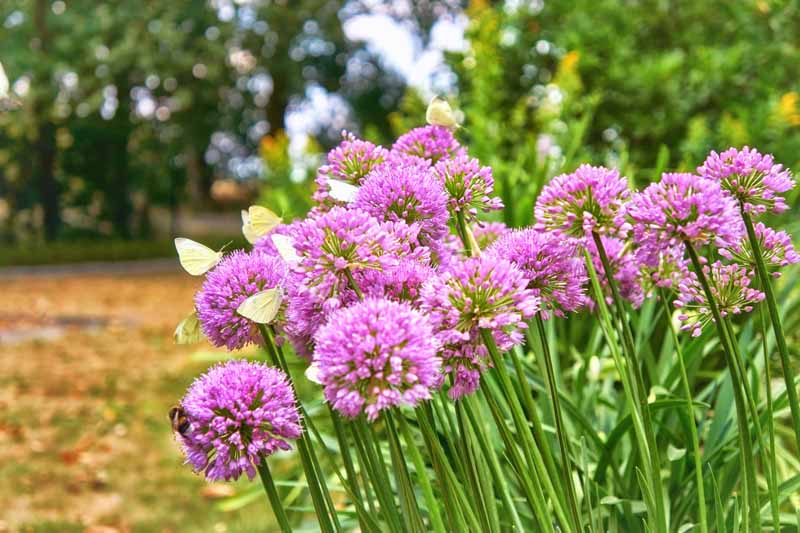Grasping the Art of Agapanthus Care: Necessary Steps for Healthy Development and Dynamic Blossoms
In the realm of gardening, the growing of agapanthus stands as a gratifying undertaking for those that seek to support these sophisticated blooming plants. From selecting the ideal selection to understanding pruning strategies, the trip in the direction of cultivating growing agapanthus plants is complex and holds the vital to opening the full possibility of these herb gems.

Choosing the Right Agapanthus Selection

When choosing the right Agapanthus range for your garden, take into consideration variables such as environment suitability, flower shade, and growth behavior. Furthermore, think about the climate in your region to make certain the Agapanthus range you pick can prosper in your certain problems. Recognizing the growth habit of various Agapanthus varieties is essential for correct placement within your yard.
Suitable Planting Problems
Thinking about the optimal environmental demands is crucial for effective Agapanthus growing. Agapanthus plants are sensitive to chilly temperature levels and need to be shielded from frost during winter months.
To ensure healthy development and vivid blooms, plant Agapanthus bulbs at a depth of regarding 2-4 inches and area them 8-12 inches apart. Mulching around the base of the plants helps keep wetness and subdues weed development.
Watering and Fertilizing Tips
Keeping proper dampness levels and supplying vital nutrients are key components in the care routine for Agapanthus plants. When it comes to watering Agapanthus, it is crucial to strike an equilibrium. These plants choose consistently wet soil yet are prone to root rot if overwatered.
Feeding Agapanthus is necessary for promoting healthy and balanced growth and prolific blooms. Use a well balanced fertilizer, such as a 10-10-10 formula, in the early spring as brand-new development arises. Repeat this application every 6-8 weeks throughout the expanding period. Prevent too much fertilization, as it can bring about lush foliage at the cost of flowers. Constantly follow the manufacturer's guidelines for correct dilution and application methods. By complying with these watering and feeding pointers, you can ensure your Agapanthus plants thrive and produce lively, durable blossoms.
Trimming Methods for Agapanthus
Trimming Agapanthus plants at the suitable times and with correct strategies is crucial for maintaining their health and advertising ideal development and blooming. The ideal time to trim Agapanthus is in late winter or very early spring prior to new development arises. Beginning by eliminating any kind of dead or yellowing fallen leaves near the base of the plant. Cut them as close to the ground as feasible without harming the arising shoots.
Deadheading spent flowers can additionally redirect the plant's power right into creating more blooms rather than setting seeds. If you desire to gather seeds right here for proliferation, leave some flowers to mature and dry on the plant.
Remember to make use of clean, sharp devices to make accurate cuts and lower the risk of presenting conditions. Agapanthus. Routine trimming will certainly help keep your Agapanthus looking cool and healthy and balanced while guaranteeing a plentiful display of stunning blossoms
Dealing With Typical Bugs and Diseases
After ensuring appropriate trimming methods for Agapanthus, it is vital to deal with common pests and conditions that can affect the health and vigor of these plants. Agapanthus plants are typically sturdy yet can still succumb certain concerns. One common insect that impacts Agapanthus is the Agapanthus gall midget. This small, orange try this web-site fly lays its eggs in the foliage, resulting in distorted growth and blossom buds that stop working to open up. To combat this pest, trim and damage any kind of damaged plant parts and take into consideration utilizing insecticidal soap.
Another usual issue is fungal leaf place, which provides as dark lesions on the leaves. To avoid fungal conditions, make certain great air flow around the plants, avoid overhanging watering, and get rid of any type of contaminated leaves without delay. Furthermore, Agapanthus plants can experience from root rot if they are grown in badly draining pipes dirt. To stop this, plant Agapanthus in well-draining soil and stay clear of overwatering. By being vigilant and taking timely action versus insects and conditions, you can assist your Agapanthus plants grow and create vivid blossoms.

Final Thought
In conclusion, grasping the art of agapanthus care involves picking the right selection, providing excellent growing problems, proper watering and fertilizing, proper pruning strategies, and attending to usual bugs and diseases. By following these crucial steps, you can ensure healthy growth and lively flowers for your agapanthus plants. Bear in mind to frequently monitor and keep your plants to advertise their overall wellness and long life.
To make certain healthy and balanced growth and dynamic blossoms, plant Agapanthus bulbs at a depth of regarding 2-4 inches and room them 8-12 inches apart. By adhering to these watering and feeding ideas, you can guarantee your Agapanthus plants grow and generate lively, durable blossoms.
One common parasite that impacts Agapanthus is the Agapanthus gall midget. Additionally, Agapanthus plants can these details endure from root rot if they are planted in improperly draining dirt. By adhering to these important steps, you can ensure healthy and balanced development and lively blossoms for your agapanthus plants.